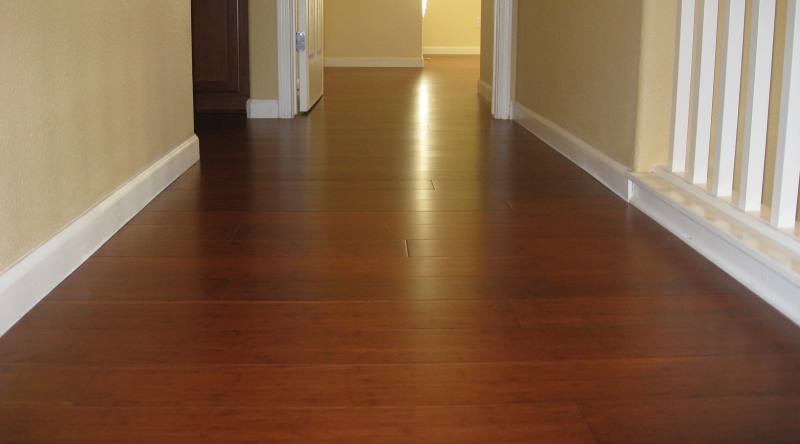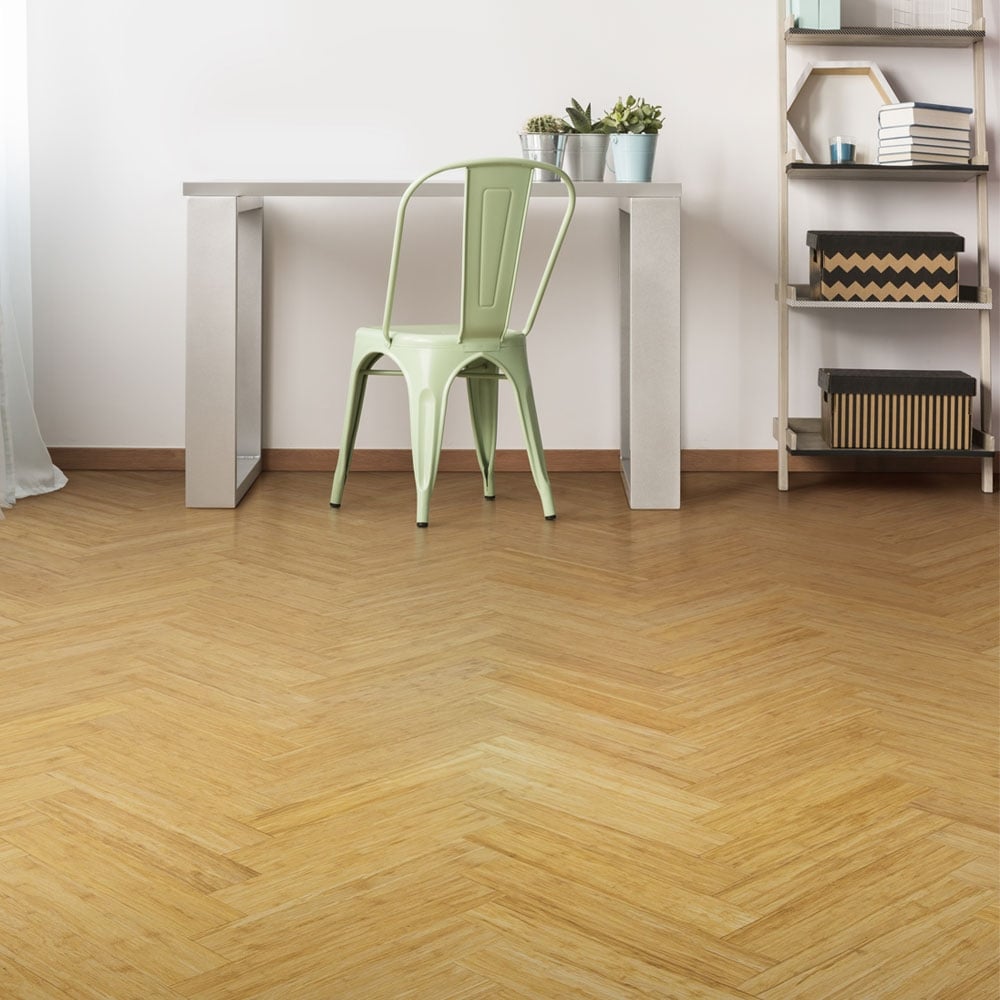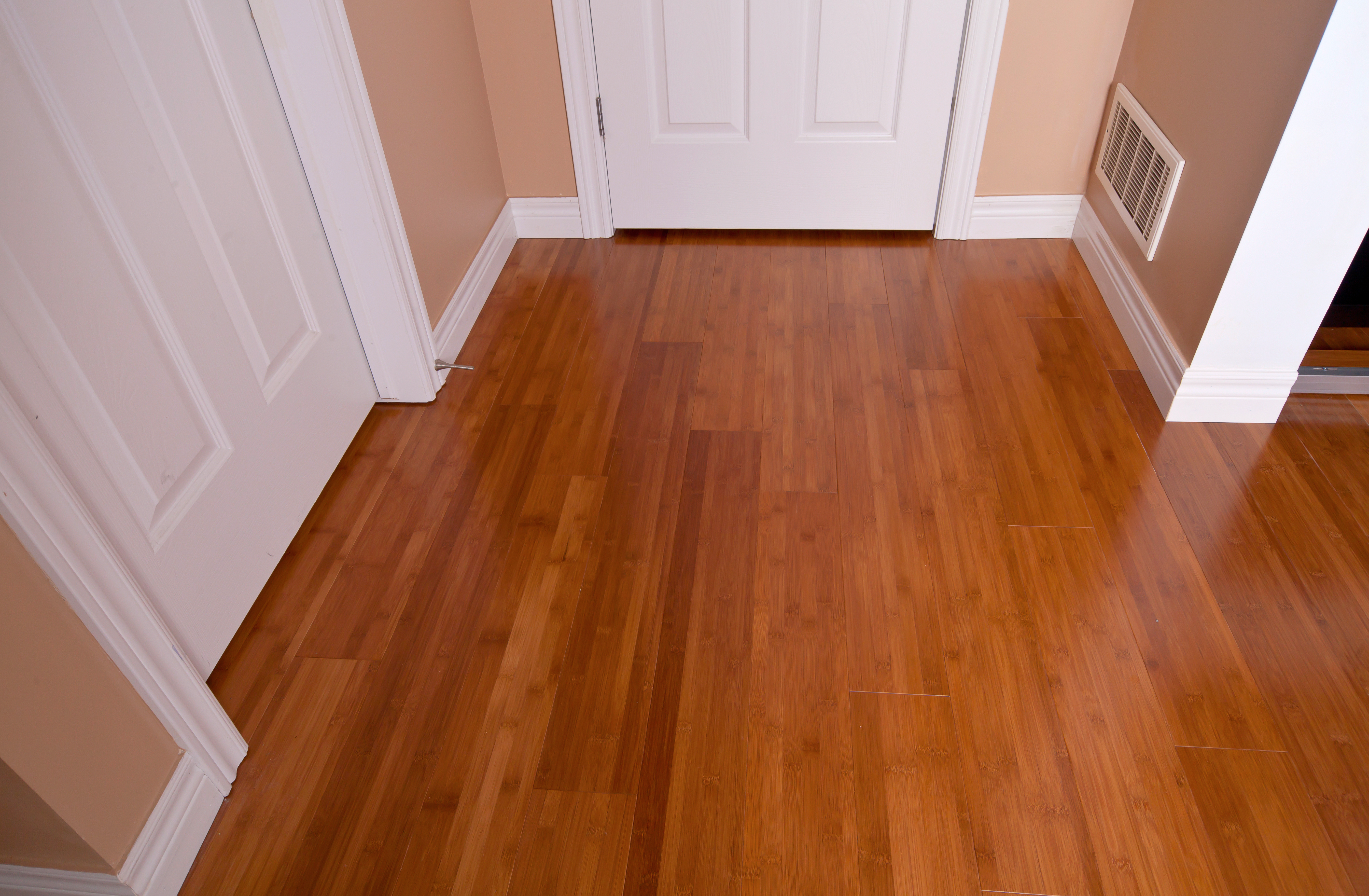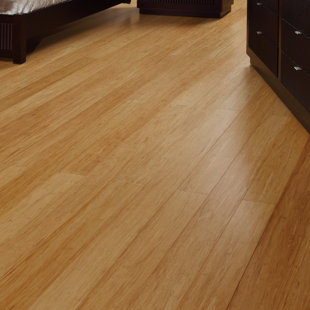Exploring the Various Bamboo Flooring Patterns
When I was first drawn to bamboo flooring, I quickly realized there’s more to it than just picking the material. The pattern of the bamboo flooring can completely change the vibe of a room. Each pattern brings its own unique visual appeal and texture, and deciding on the right one is just as important as selecting bamboo over other flooring materials. Let me walk you through the main types of bamboo flooring patterns and what sets them apart.
- Horizontal Bamboo: A Classic and Natural Look
Horizontal bamboo is one of the most traditional and popular bamboo flooring patterns. The horizontal arrangement of the bamboo strips reveals the natural grain of the bamboo, giving the floor a more natural and warm look. I find that it creates a cozy and inviting atmosphere, perfect for living spaces like the family room or bedroom. - Vertical Bamboo: A Sleeker, Modern Approach
For those looking for a more streamlined and modern aesthetic, vertical bamboo patterns might be the perfect choice. In this pattern, bamboo strips are stacked vertically, which produces a more uniform, minimalist grain pattern. It’s a great option if you prefer a subtle, clean look without too much texture. - Strand Woven Bamboo: Strength and Durability
When I heard about strand woven bamboo, I was immediately intrigued by its durability. This pattern involves compressing bamboo fibers into a tightly woven plank, which not only makes it incredibly strong but also results in a uniquely textured and varied look. It’s ideal for high-traffic areas like kitchens and entryways. - Chevron and Herringbone Bamboo: Eye-Catching Geometric Designs
If you’re after a flooring pattern that makes a statement, chevron and herringbone patterns can add a striking geometric element to your space. These designs offer a more artistic, intricate appearance, elevating the entire room. I love how these patterns give an extra touch of luxury and sophistication to a space. - Mixed Patterns: A Blend of Styles
Sometimes, I like to mix it up, combining different bamboo patterns to create a truly unique design. Blending horizontal and vertical patterns, or even adding in strand woven bamboo, can result in an eclectic, one-of-a-kind floor that showcases multiple textures and colors. - Bamboo Parquet Patterns
Parquet flooring has always been associated with elegance, and using bamboo in a parquet pattern is no exception. With small pieces of bamboo arranged in repeating geometric patterns, this option provides a classic, detailed look that can make any space feel more refined. - Diagonal or Angled Bamboo Patterns
I’ve found that laying bamboo planks at an angle, rather than in straight lines, adds a dynamic and interesting twist to a room’s layout. Angled or diagonal bamboo patterns create movement in the room, which can help make smaller spaces feel larger and more open.

Horizontal Bamboo: A Classic and Natural Look
When I first looked into bamboo flooring, I was drawn to the horizontal bamboo pattern. There’s something timeless about it that made me feel like I could blend both modern and rustic aesthetics in my home. This pattern highlights the natural grain of bamboo, giving the floor a warm, authentic look that closely resembles traditional hardwood flooring.
Natural Grain and Texture
One of the key features I love about horizontal bamboo is how it reveals the knuckles and nodes of the bamboo stalk. It gives the floor character and adds a sense of natural beauty. Unlike some synthetic materials, horizontal bamboo celebrates its organic roots, which enhances the feeling of bringing nature indoors.
A Cozy, Warm Ambiance
Whenever I walk into a room with horizontal bamboo flooring, I immediately feel a sense of warmth and coziness. The natural grain pattern brings a comforting, earthy tone to the space, which makes it perfect for living rooms, bedrooms, or any area where I want to create a welcoming atmosphere.
Light Reflective Qualities
I’ve noticed that horizontal bamboo tends to reflect light beautifully. Depending on the finish, this can make a room feel brighter and more open. The natural sheen of the bamboo can subtly bounce sunlight around the space, giving it an inviting glow.
Works Well with Many Styles
What I love most about horizontal bamboo is its versatility. Whether I’m going for a minimalist, modern look or a cozy, farmhouse vibe, this pattern adapts seamlessly. I don’t feel restricted by style choices when I have horizontal bamboo floors—they seem to complement almost anything.
Sustainable and Eco-Friendly
Bamboo is a sustainable option, and that’s something I appreciate every time I walk across my horizontal bamboo floors. The fact that it grows rapidly and is harvested responsibly adds to its appeal for anyone looking to make eco-conscious design choices.
Great for High-Traffic Areas
One of the practical reasons I went with horizontal bamboo was its durability. It holds up well in high-traffic areas like the hallway or living room, where family members and pets tend to be most active. This means I can enjoy its beauty without worrying about excessive wear and tear.
Vertical Bamboo Patterns: Sleek and Modern Appeal
I love how vertical bamboo flooring brings a contemporary twist to any space. The first time I saw it, I was struck by its clean and uniform look, which stands in stark contrast to the more natural, knotted texture of horizontal bamboo. If you’re after a sleek, modern design, vertical bamboo can be an excellent choice.
Minimalist Aesthetic
The straight lines and narrow strips of vertical bamboo create a minimalist appearance that feels calm and uncluttered. When I walk into a room with vertical bamboo flooring, the simplicity and uniformity immediately catch my eye. It’s an ideal pattern if you’re aiming for a modern, minimalist home.
Consistent Grain Pattern
Unlike horizontal bamboo, which showcases the natural knots and nodes of the bamboo stalk, vertical bamboo has a much more consistent grain pattern. This gives it a more polished, contemporary feel that works beautifully in spaces with clean lines and modern furnishings.
Creates the Illusion of Space
One of the unexpected benefits I’ve found with vertical bamboo is that it can make a room feel taller. The long, straight grain lines create an illusion of height, which is perfect for smaller rooms or spaces with low ceilings. It draws the eye upward, giving a sense of openness.
Perfect for Modern Interiors
Vertical bamboo fits right into modern interiors, where clean, smooth lines are often the focus. Whether I’m designing a sleek kitchen or a contemporary living room, this pattern complements the overall style without being too distracting or ornate.
Less Texture, More Sophistication
While some may prefer the natural texture of horizontal bamboo, I love the smooth and sophisticated appearance of vertical bamboo. It feels more refined, and I often associate it with a more high-end, professional look.
Durability in High-Traffic Spaces
Just like its horizontal counterpart, vertical bamboo is incredibly durable. It handles high foot traffic well, and I’ve found it to be an excellent choice for areas like the kitchen or hallway, where it stands up to daily wear and tear without showing signs of aging too quickly.
Strand Woven Bamboo: Unique and Durable Patterns
When I first learned about strand woven bamboo, I was fascinated by how it differed from traditional bamboo flooring. Strand woven bamboo is made by compressing bamboo fibers under high pressure, creating a dense and incredibly durable flooring option. What sold me was its distinctive look—each plank has a unique, textured appearance that adds a lot of character to any room.
Unmatched Durability
One of the biggest reasons I opted for strand woven bamboo in high-traffic areas is its strength. This flooring is significantly harder than traditional horizontal or vertical bamboo due to the way it’s manufactured. It’s often compared to hardwoods like oak in terms of toughness. I love that I don’t have to worry about scratches or dents, even in busy spaces like the kitchen or hallway.
Unique and Varied Appearance
Every strand woven bamboo plank looks different, which gives the floor a natural, organic feel. No two planks are the same, and I appreciate how this adds visual interest without being overwhelming. The rich texture and color variation make strand woven bamboo a show-stopper in any room.
Perfect for High-Traffic Areas
Strand woven bamboo is ideal for spaces where durability is key. I’ve installed it in my entryway, where people are constantly coming and going, and it’s held up beautifully. Unlike some other flooring options, strand woven bamboo doesn’t show wear easily, making it a long-lasting investment.
Eco-Friendly and Sustainable
Sustainability is always top of mind when choosing flooring, and strand woven bamboo fits the bill. Bamboo grows rapidly and regenerates quickly after harvesting, making it an environmentally responsible choice. Knowing that I’m using a sustainable material makes me feel even better about my flooring choice.
Resistant to Moisture
Another major selling point for strand woven bamboo is its moisture resistance. While all bamboo is more moisture-resistant than hardwood, strand woven bamboo takes it to another level. This feature makes it a great option for kitchens, bathrooms, and basements, where moisture levels can fluctuate.
Stylish and Versatile
Whether I’m going for a rustic, earthy vibe or a sleek, modern look, strand woven bamboo fits right in. Its unique texture pairs well with a variety of design styles, making it an incredibly versatile choice. I’ve been able to use it in both traditional and contemporary spaces, and it never looks out of place.
Chevron and Herringbone Bamboo: Eye-Catching Geometric Designs
If you’re like me and love a bit of flair in your flooring, chevron and herringbone bamboo patterns are sure to grab your attention. These patterns are not your average straight planks—they add an artistic, geometric twist that elevates the entire room. I found that the visual impact of these designs is undeniable, creating a sophisticated and luxurious feel.
Striking Visual Appeal
The first thing that drew me to chevron and herringbone patterns was their bold, eye-catching design. Both patterns involve laying bamboo planks in a V-shape, but while chevron cuts the ends at an angle, herringbone keeps the planks in rectangular cuts. No matter which one you choose, these patterns instantly become the focal point of any room.
Adds Movement and Depth
What I love most about these geometric patterns is how they add a sense of movement and depth to the floor. Instead of simple, straight lines, the intricate V-shapes create a dynamic flow throughout the space. This works wonders in larger rooms or open-concept spaces, where you want to break up the monotony of expansive flooring.
Luxurious Aesthetic
There’s no denying that chevron and herringbone patterns bring an element of luxury to a room. These patterns are often associated with high-end homes and historical estates, but bamboo brings them into a more sustainable, modern context. I love how my floors feel both timeless and trendy at the same time.
Customizable to Your Space
One of the best things about chevron and herringbone bamboo patterns is their flexibility. Whether you want a bold, high-contrast look or a more subtle, understated effect, you can customize the size and color of the planks to suit your personal style. For me, this customization allowed me to get the exact look I wanted for my home.
Works in Both Large and Small Spaces
I was initially worried that such intricate patterns might overwhelm a smaller room, but I was pleasantly surprised. The geometric designs can actually make smaller spaces feel more interesting and dynamic. In larger rooms, the patterns create a sense of movement and flow, adding warmth and texture to wide-open areas.
Perfect for Statement Floors
If you’re looking to make a bold design statement, chevron and herringbone bamboo are the way to go. I’ve used them in my dining room, and it completely transformed the space from basic to breathtaking. These patterns are not for the faint of heart, but they’re perfect for anyone who wants to make their floors a focal point.
Choosing the Right Bamboo Pattern for Your Space
Selecting the perfect bamboo flooring pattern is more than just picking what looks good. I’ve found that the right pattern can make all the difference when it comes to enhancing a room’s character, style, and functionality. While there are several bamboo patterns to choose from, making the best choice depends on the space, the amount of traffic it gets, and the overall aesthetic you’re aiming for.
Consider the Size of the Room
One of the first things I think about when choosing a bamboo pattern is the size of the room. For larger spaces, I often lean toward bold patterns like chevron or strand woven bamboo to add visual interest. In smaller rooms, I find that vertical or horizontal patterns work best, as they create a more open and airy feel without overwhelming the space.
Think About Traffic and Wear
I’ve learned the hard way that not all rooms experience the same amount of foot traffic. In high-traffic areas like the hallway or kitchen, I always opt for durable options like strand woven bamboo. For rooms that see less activity, like a bedroom or home office, I feel comfortable choosing a pattern that focuses more on aesthetics, like horizontal bamboo.
Match the Aesthetic of the Space
The pattern of your bamboo floor should complement the overall style of the room. In modern spaces, vertical bamboo offers a sleek, minimalist look, while horizontal bamboo fits well with rustic or traditional decor. If I want to create a statement, chevron or herringbone patterns add a touch of sophistication and elegance that can’t be matched.
Lighting and Reflection
Lighting is another factor I always consider. In rooms with lots of natural light, horizontal bamboo reflects light beautifully, making the space feel warm and inviting. For darker rooms, I lean toward strand woven bamboo, which has a more matte finish that absorbs light, preventing glare.
Personal Preference and Lifestyle
Ultimately, personal preference plays a huge role in selecting a bamboo pattern. I like to think about how I’ll be using the space and what kind of atmosphere I want to create. If I want a room to feel cozy and natural, horizontal bamboo is my go-to. If I’m after a modern, polished look, vertical bamboo is the clear winner.
Long-Term Durability and Maintenance
I also think about long-term care and maintenance when choosing a pattern. Strand woven bamboo is highly durable and requires minimal upkeep, making it ideal for busy households. However, if I’m okay with a bit more maintenance in exchange for a unique look, chevron or herringbone patterns are worth the investment.
Tips for Installing and Maintaining Bamboo Flooring Patterns
Once I’d chosen the perfect bamboo pattern, I realized that proper installation and maintenance were key to ensuring its longevity. Bamboo flooring is generally easy to install, but there are a few tricks that can make the process smoother and ensure the floors look their best for years to come. Here are some tips I’ve learned along the way.
Acclimate the Bamboo Before Installation
Before installation, I always let the bamboo planks acclimate to the room’s environment for at least 72 hours. Bamboo, like wood, expands and contracts with humidity and temperature changes. Allowing the bamboo to adjust to the room prevents gaps or warping later on, ensuring a snug, long-lasting fit.
Use the Right Tools and Materials
Using the proper tools during installation is essential for a professional-looking finish. I make sure to have a high-quality moisture barrier, especially if I’m installing bamboo over concrete or in a high-moisture area like a kitchen. A proper underlayment is also crucial for cushioning the bamboo and reducing noise.
Leave Expansion Gaps
It’s tempting to install bamboo planks flush against the walls, but I always leave a small expansion gap around the edges. This allows the bamboo to expand naturally without causing the planks to buckle. The gap can be covered with baseboards for a seamless look.
Regular Cleaning Is Key
Bamboo is relatively low-maintenance, but regular cleaning is important to keep it looking its best. I use a soft broom or vacuum to remove dirt and debris, and I clean it with a damp mop using a pH-neutral cleaner. Avoiding harsh chemicals and excessive moisture helps prevent damage over time.
Protect Against Scratches
Even though bamboo is durable, it’s still susceptible to scratches, especially in high-traffic areas. I’ve found that using felt pads on furniture legs and placing rugs in entryways significantly reduces wear and tear. It’s a simple step that keeps the floors looking pristine.
Refinish When Necessary
One of the reasons I love bamboo is that it can be refinished if it starts to show signs of wear. Every few years, depending on the level of traffic, I consider lightly sanding and refinishing the surface to restore its original shine and beauty. This keeps the bamboo looking fresh and new, even after years of use.
Related Posts:





